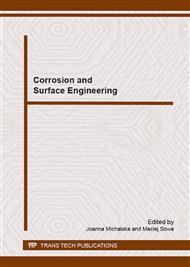p.357
p.361
p.365
p.369
p.373
p.377
p.381
p.385
p.389
Microstructure of TBC Coatings Deposited by HVAF and PS-PVD Methods
Abstract:
High velocity air fuel (HVAF) is one of the high velocity flame spraying process (HVFS). The HVAF method employs a combination of liquid fuel mixed in a chamber with compressed air to obtain high velocity flows. This technology can provide high deposition levels, adequate bond strength as well as high dense coating structure. The working principle of Plasma Spray – Physical Vapor Deposition (PS-PVD) is based on evaporation of the ceramic powder, which enables advanced microstructure of the deposits. In this paper, microstructure of Thermal Barrier Coating (TBC) deposited by HVAF and PS-PVD method was described.
Info:
Periodical:
Pages:
373-376
Citation:
Online since:
January 2015
Keywords:
Price:
Сopyright:
© 2015 Trans Tech Publications Ltd. All Rights Reserved
Share:
Citation:


